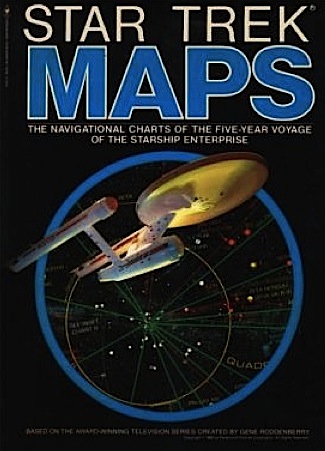Science Fiction
Dictionary
A B C D E F G H I J K L M N O P Q R S T U V W X Y Z
X-Ray Pulsar 'Beacons' To Guide Spacecraft

X-Ray pulsars can be used to triangulate the position of space craft to within a few kilometers, according to scientists at the Max-Planck Institute for Extraterrestrial Physics in Garching, Germany.
(Artist’s impression of Rosetta, if it navigated in deep space using pulsar signals)
Werner Becker and his team are developing a novel navigation technology for spacecraft based on the regular emission of X-ray light from pulsars. Their periodic signals have timing stabilities comparable to atomic clocks and provide characteristic time signatures that can be used as natural navigation beacons, similar to the use of GPS satellites for navigation on Earth.By comparing the arrival times of the pulses measured on board the navigator spacecraft with those predicted at a reference location, the spacecraft position can be determined with an accuracy of few kilometers, everywhere in the Solar System and far beyond.
[Becker:] “These X-ray beacons could augment the existing GPS/Galileo satellite navigation systems and provide autonomous navigation for interplanetary space probes and future manned missions to Mars.”
Science fiction writers of the 1950's were fascinated by this idea. In his 1952 story Troubled Star, George O. Smith described space beacons:
"And what is a beacon?""It is a phenomenon caused by the Doppler effect when traveling at galactic speeds. In this case, when coming through this rift at fifteen hundred light years per hour, a three-day variable star will appear to the observer as a rapidly blinking light..."
"We use the three-day variable to denote the galactic travel lanes. Very effective.
(Read more about Smith's space beacon)
In his 1956 story The Repairman, Murray Leinster described a hyperspace beacon:
Every beacon has a code signal as part of its radiation and represents a measurable point in hyperspace. Triangulation and quadrature works for navigation - only it follows its own rules.For a hyperspace jump, you need at least four beacons for an accurate fix.
(Read more about Harrison's hyperspace beacon)
In 1980, Star Trek Maps was published; it consisted of a set of four maps and an Introduction to Navigation booklet. In the accompanying pamphlet, they described the standard navigation system using "sub-space beacons", and then described the emergency system that used pulsars as a GPS system. It included the real equations as well.

(Star Trek Maps: galactic coordinates and basic vector calculus)
Via AstroBio; thanks to Winchell Chung (aka @nyrath) of Project Rho.
Scroll down for more stories in the same category. (Story submitted 3/31/2012)
Follow this kind of news @Technovelgy.| Email | RSS | Blog It | Stumble | del.icio.us | Digg | Reddit |
Would
you like to contribute a story tip?
It's easy:
Get the URL of the story, and the related sf author, and add
it here.
Comment/Join discussion ( 0 )
Related News Stories - (" Space Tech ")
Will Space Stations Have Large Interior Spaces Again?
'They filed clumsily into the battleroom, like children in a swimming pool for the first time, clinging to the handholds along the side.' - Orson Scott Card, 1985.
Reflect Orbital Offers 'Sunlight on Demand' And Light Pollution
'I don't have to tell you about the seven two-mile-diameter orbital mirrors...'
Chrysalis Generation Ship to Alpha Centauri
'This was their world, their planet —
this swift-traveling, yet seemingly moveless vessel.' - Nat Schachner, 1934
The First Space Warship For Space Force
'Each of the electrical ships carried about twenty men...' - Garrett P. Serviss, 1898.
Technovelgy (that's tech-novel-gee!) is devoted to the creative science inventions and ideas of sf authors. Look for the Invention Category that interests you, the Glossary, the Invention Timeline, or see what's New.
Science Fiction
Timeline
1600-1899
1900-1939
1940's 1950's
1960's 1970's
1980's 1990's
2000's 2010's
Current News
The Zapata Air Scooter Would Be Great In A Science Fiction Story
'Betty's slapdash style.'
Thermostabilized Wet Meat Product (NASA Prototype)
There are no orbiting Michelin stars. Yet.
Could Crystal Batteries Generate Power For Centuries?
'Power could be compressed thus into an inch-square cube of what looked like blue-white ice'
India Ponders Always-On Smartphone Location Tracking
'It is necessary... for your own protection.'
Amazon Will Send You Heinlein's Knockdown Cabin
'It's so light that you can set it up in five minutes by yourself...'
Is It Time To Forbid Human Driving?
'Heavy penalties... were to be applied to any one found driving manually-controlled machines.'
Replace The Smartphone With A Connected Edge Node For AI Inference
'Buy a Little Dingbat... electropen, wrist watch, pocketphone, pocket radio, billfold ... all in one.'
Artificial Skin For Robots Is Coming Right Along
'... an elastic, tinted material that had all the feel and appearance of human flesh and epidermis.'
Robot Guard Dog On Duty
I might also be thinking of K-9 from Doctor Who.
Wearable Artificial Fabric Muscles
'It is remarkable that the long leverages of their machines are in most cases actuated by a sort of sham musculature...'
BrainBridge Concept Transplant Of Human Head Proposed
'Briquet’s head seemed to think that to find and attach a new body to her head was as easy as to fit and sew a new dress.'
Google's Nano Banana Pro Presents Handwritten Math Solutions
'...copy was turned out in a charming and entirely feminine handwriting.'
Edible Meat-Like Fungus Like Barbara Hambly's Slunch?
'It was almost unheard of for slunch to spread that fast...'
Sunday Robotics 'Memo' Bot Has Unique Training Glove
'He then started hand movements of definite pattern...'
Woman Marries Computer, Vonnegut's Dream Comes True
'Men are made of protoplasm... Lasts forever.'
Natural Gait With Prosthetic Connected To Nervous System
'The leg was to function, in a way, as a servo-mechanism operated by Larry’s brain...'
